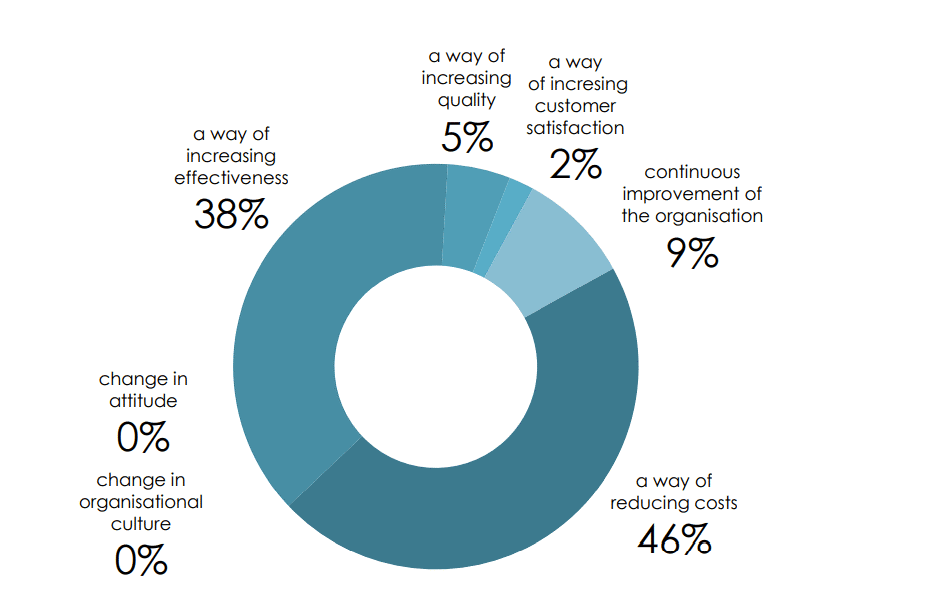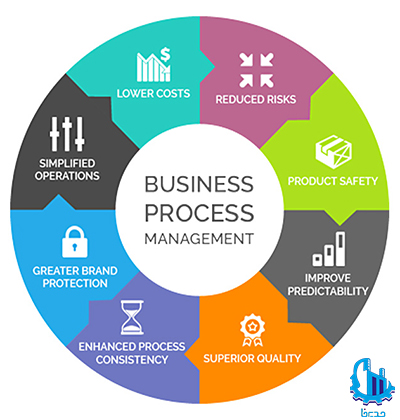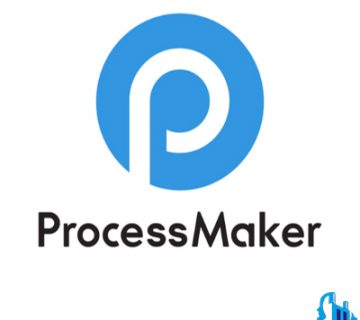Business process management helps companies increase efficiency, adaptation and quality of work with automation.
What is the process management?
What is the process management?
Business Process Management or Business Management (BPM) is an organizational order that provides tools and resources for analyzing, optimizing, monitoring and controlling business processes and measuring and guiding better performance of dependent business processes.
Our research can help your organization develop and implement sustainable business management processes.
How to work and pre -process process management

The important prerequisite for successful process management is process -based thinking. This means that the main focus is not on the division of tasks, but rather to each employee because they are the ones who perform the procedure process.
Process management is not just a software
Process management is not just a software
Business process management is a combination of individuals, policies and technology. While software such as Integrify helps simplify and automate workflows and processing after development, only software is not enough.
Also, while the BPM is usually managed as a top -down and at the organization level, many of the principles of managing extensive organizational processes can also be applied to different sectors or business areas.
Process management steps
Process management steps
- Analysis
- Design / modeling
- Performance
- Supervision
- Optimization
Analysis
Analysis
Business analysts review the current work process, interview participants, and share the desired results with management. The goal is to get a good understanding of how to do things and keep the results align with business expectations.
For example, “What is the current way of dealing with customer goods and how did it affect income and profit?”
Design / modeling
Design / modeling
During this stage, the current trend – or “as it is” must be drawn and the ideal trend of the future – or “mode”.
The goal is to create a sequence of logical steps that visually document the process of end -to -end.
When these steps are documented, additional information may be added such as the time and duration of the tasks, the location of their occurrence, the people involved, and the way the information is transferred through the process.
After the process of the process, the end users must check it to ensure its accuracy and examine the proposed improvements in the “future” mode, which seems to be of great value.
Performance
At the implementation stage – or implementation – the “future” status is accepted in the business.
This may require the addition of technology, procedural updates, or changes to resources, training or work method.
If possible, the “future” process can first be tested on a small group or unit function so that it can control its effect and eliminate tooth problems.
Supervision
Supervision
The main performance indicators must be created (often in the process of process defining) so the criteria can be traced to them. This can be done through reports or dashboards and can focus on macro or micro indicators (a complete process against process sections).
Optimization
Optimization
With effective follow -up, an organization can effectively direct the operation to optimize or improve the process with agility. This means identifying process bottlenecks, resource issues, etc. and finding ways to improve the process regularly.
Business Process Optimization (BPO) is the redesign of processes to enhance the efficiency and reinforce the alignment of individual processes with a comprehensive strategy and goals.
A BPM initiative may include BPO efforts, but it also provides a strong framework for directing the organization through major changes from regulatory policies, accepting new technologies, rebuilding, growth or market dynamics.

The reasons for using process management
The reasons for using process management
Process management is a means of defining, visualizing, measuring, monitoring and optimizing processes.
In addition, all members of a company enables to understand and understand the processes of their company and implement them in line with the purpose of meeting customer needs.
The main purpose of the process management:
The main purpose of the process management:
- Increase customer satisfaction
- Increase Productivity
To achieve these goals, the process management considers the following:
To achieve these goals, the process management considers the following:
- Increase effectiveness
- Increase efficiency
- Increased transparency
In addition, process management creates process structures based on the following requirements:
In addition, process management creates process structures based on the following requirements:
- Processes must be a speech
- Process performance must be efficient
- Processes must be clear and transparent for all people and thus supported by them
Why is process management important?
Why is process management important?
Effective process management has many benefits for jobs:
-
Enables agility:
In markets that are always changing, jobs must remain flexible in order to concentrate their activities.
Adult process management allows jobs to quickly review and adapt their processes and respond to unforeseen conditions.
-
Enhances efficiency:
Good process management means continuous supervision and optimization of business processes.
This means that the bottlenecks are quickly identified and eliminated and reduce delays. Automated processes reduce the risk because it eliminates the likelihood of human error.
-
Enhances monitoring capability:
Part of the effective process management approach involves allocating ownership, which means that each person is responsible for monitoring each process.
Process owner information plus improves the report of transparency of the report and enables timely vision of operational performance.
-
Increases the potential of income:
From the jobs under study, they felt that process management offered a way to save money and increase income.

Mapping of the processes of an organization determines that costs can be reduced or saved by time improvement.
Optimizing some processes – such as when selling products – can also increase income directly.
-
Increases the interaction of employees:
Process management involves identifying the opportunities for automatic repetitive office work. This means that employees can focus on the tasks that add value to the business.
A purposeful feeling increases employee participation, which makes employees focus on other areas such as their progress and increase the level of interactions.
-
Promotes the culture of continuous recovery:
The embedding of an effective process management approach nurtures the culture of improvement.Holders of processes and extensive groups of employees must be returned to optimize innovative ideas that optimize processes and increase productivity and reward them.
The historical landscape of process management
The historical landscape of process management
Process management can return to the early days of industrial engineering and quality management (quality control and quality engineering). The first focus was on simplifying factory processes to increase productivity.
However, process management concepts are currently used in a variety of organizations to improve the fundamentals of the process (safety, quality, cycle time, productivity, timely delivery, etc.) as well as to improve financial and operational results.
Contact us for any advice on business management management. Our experts are ready to respond to your loved ones.
021-88761795-88764867






No views